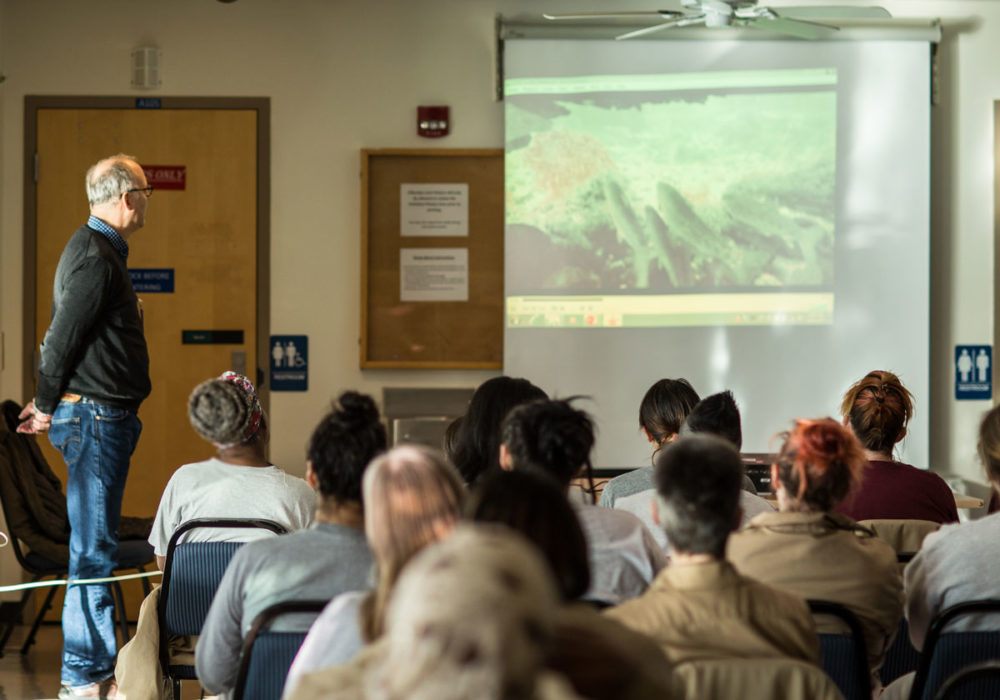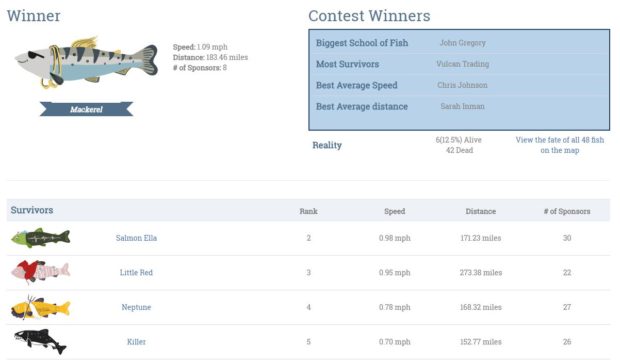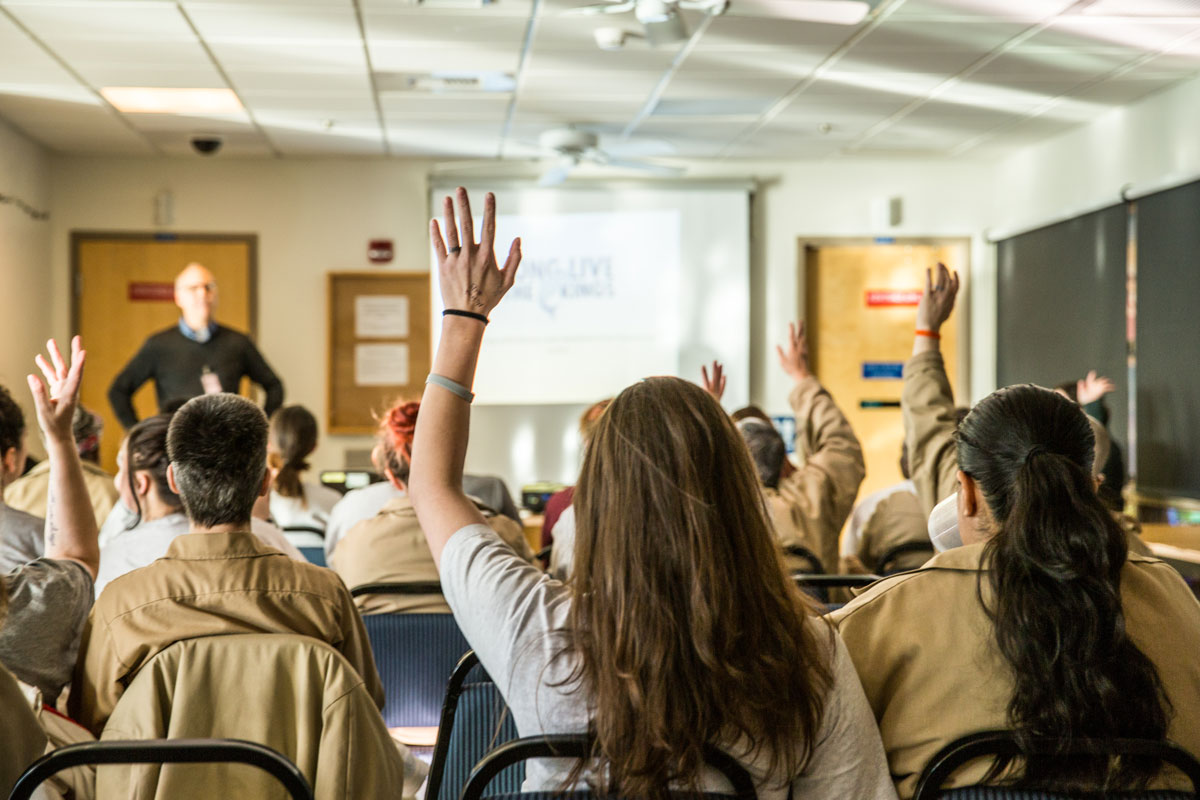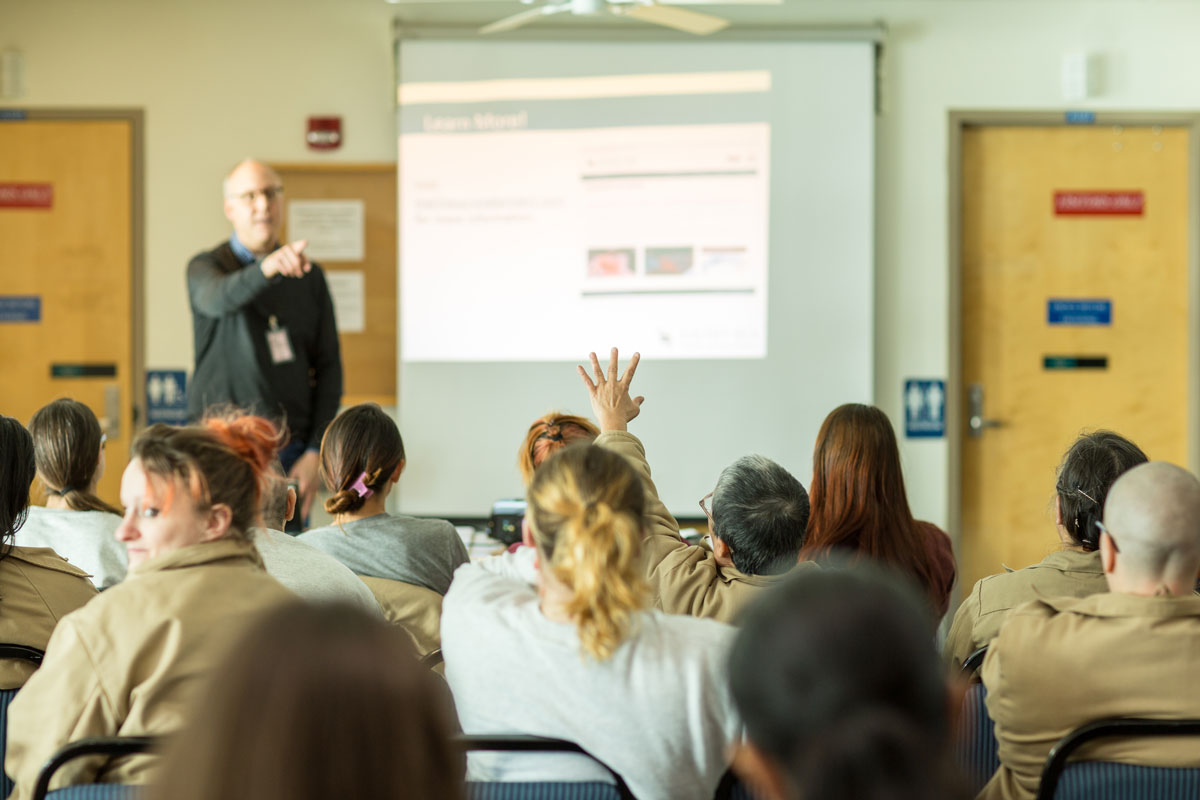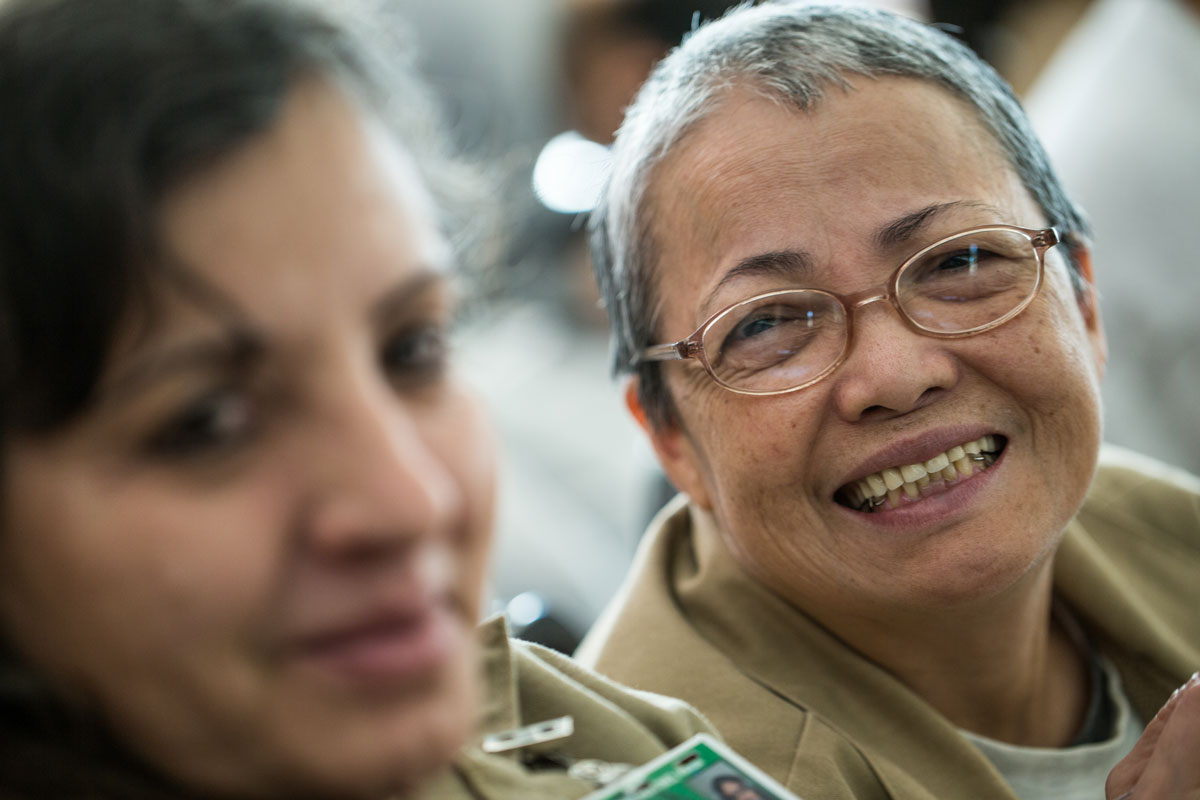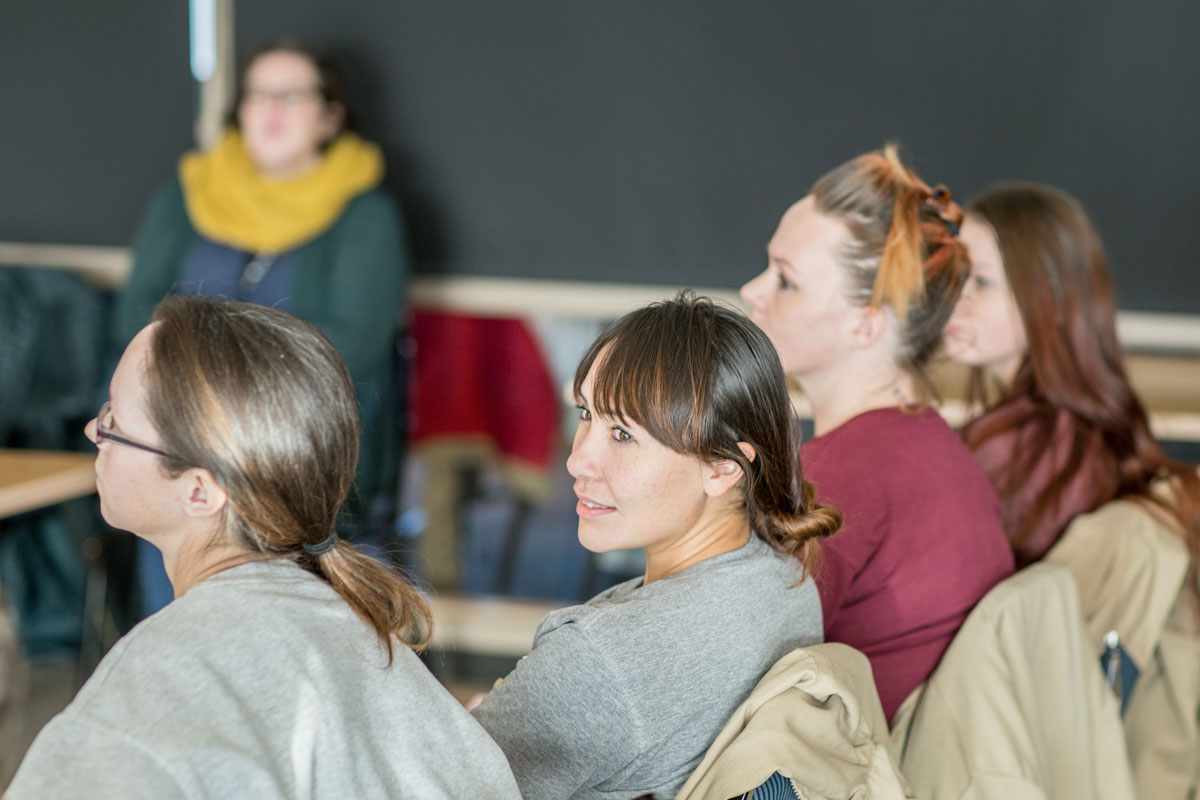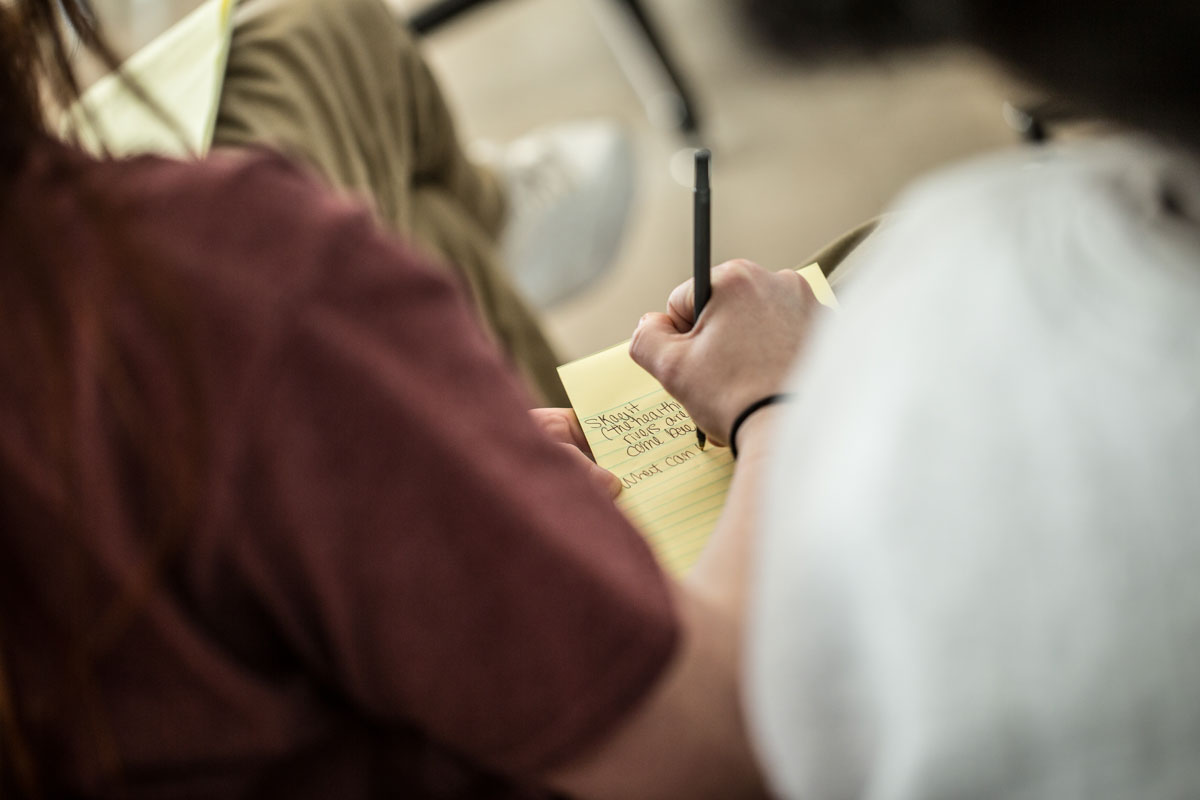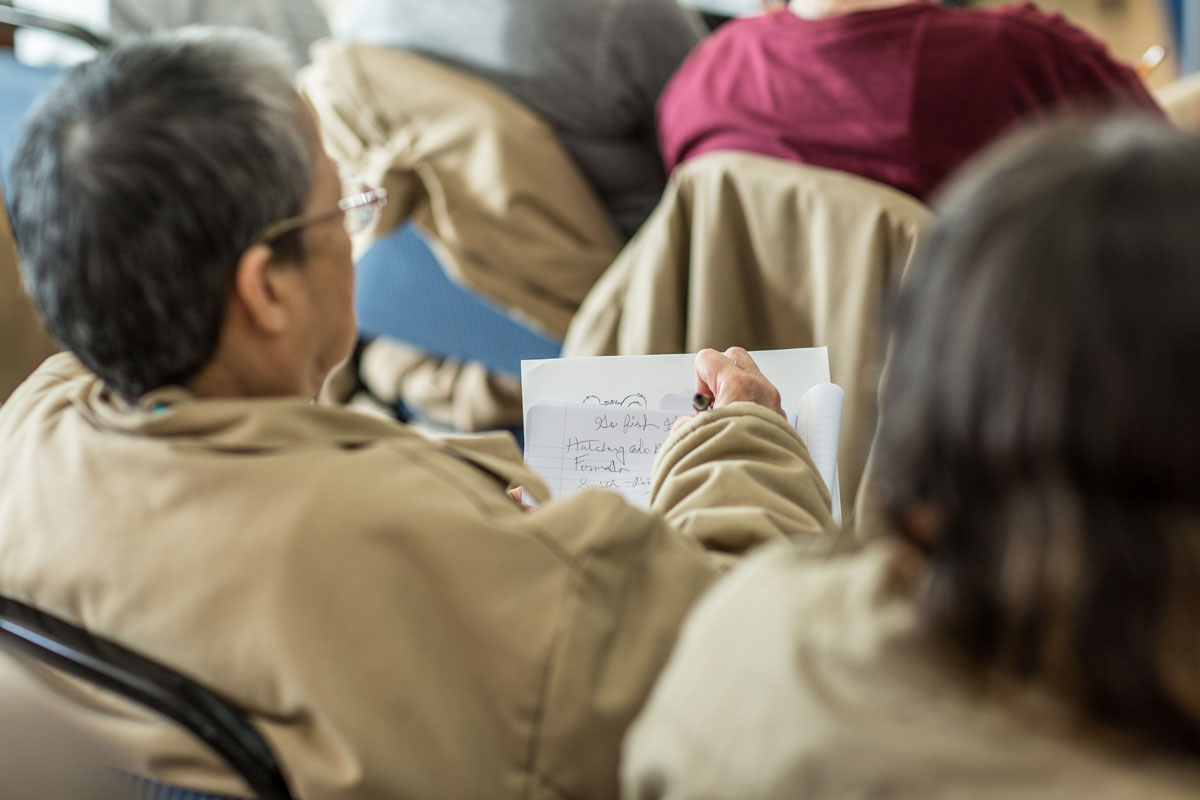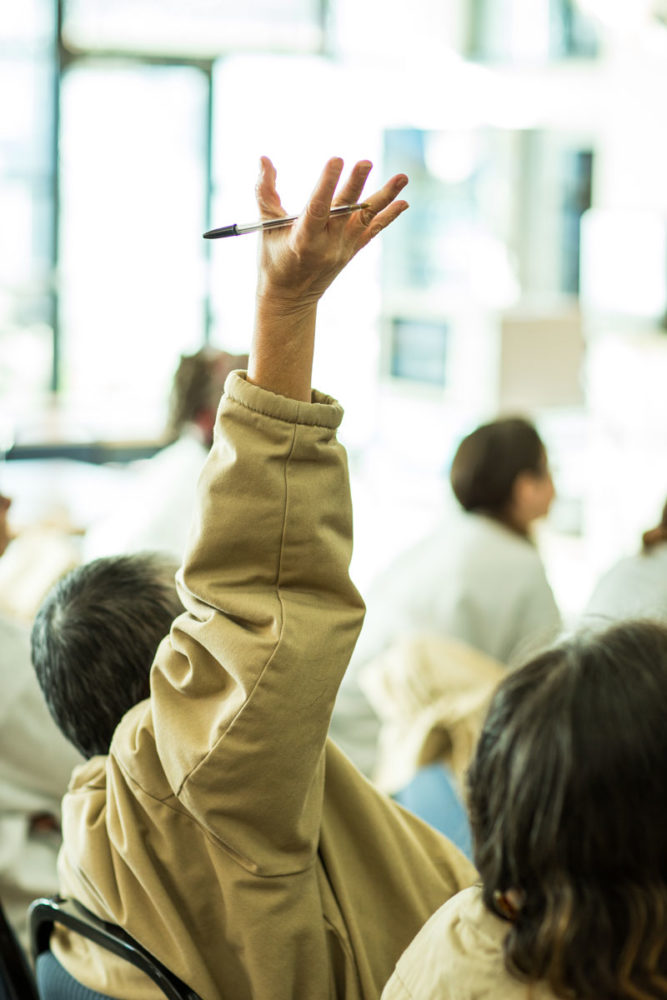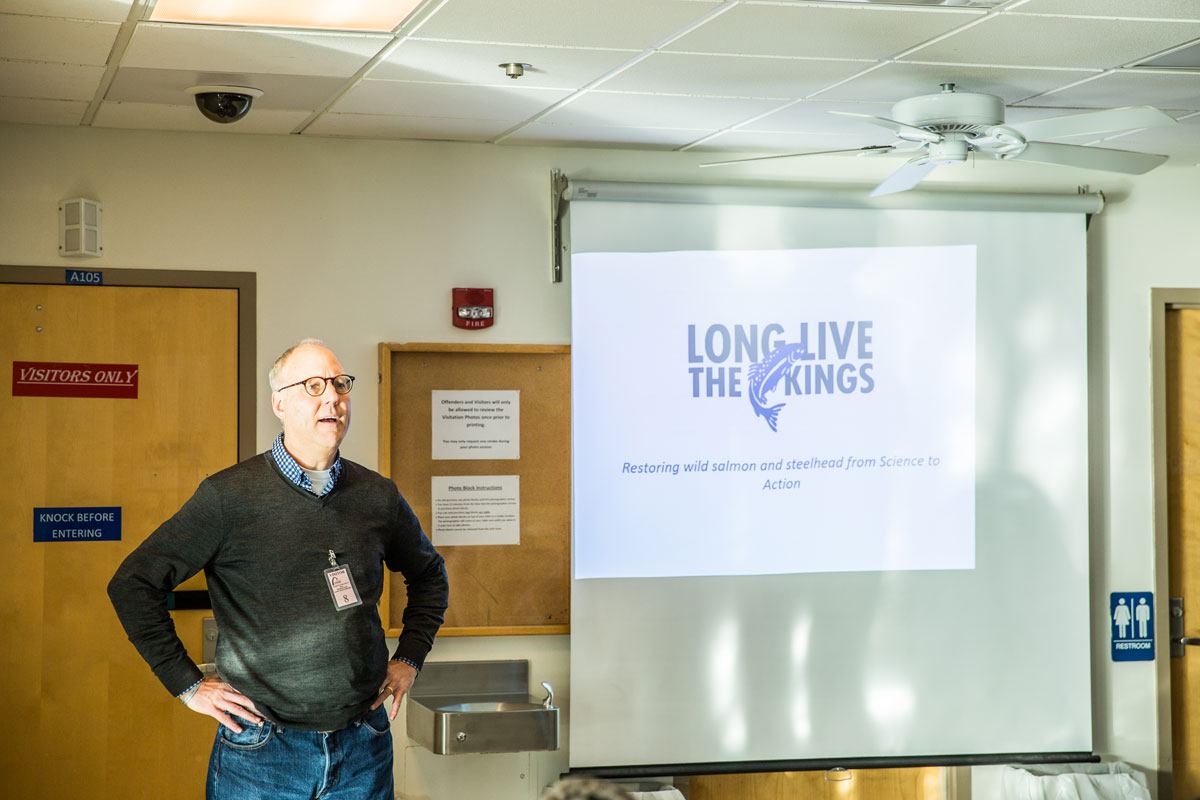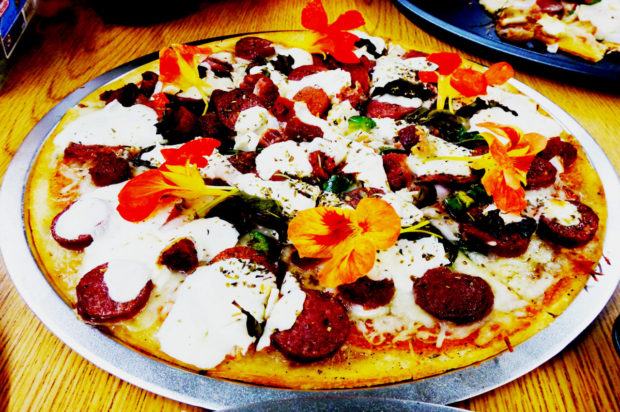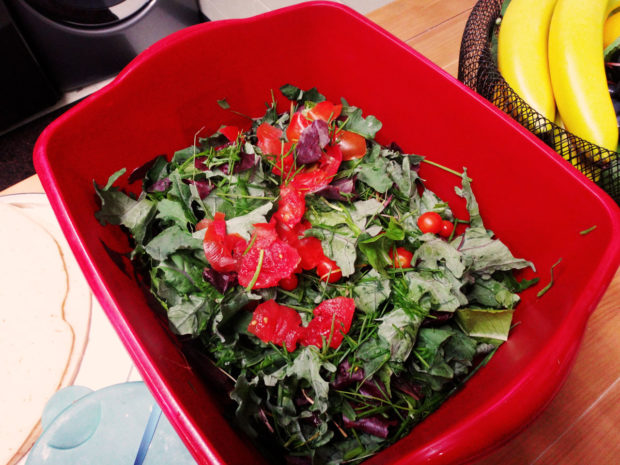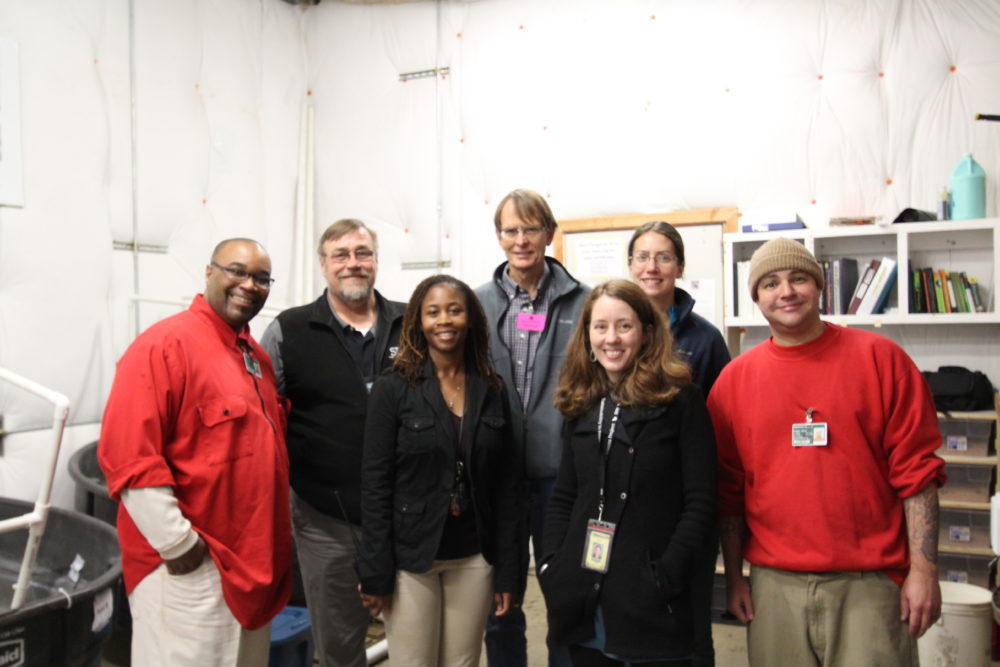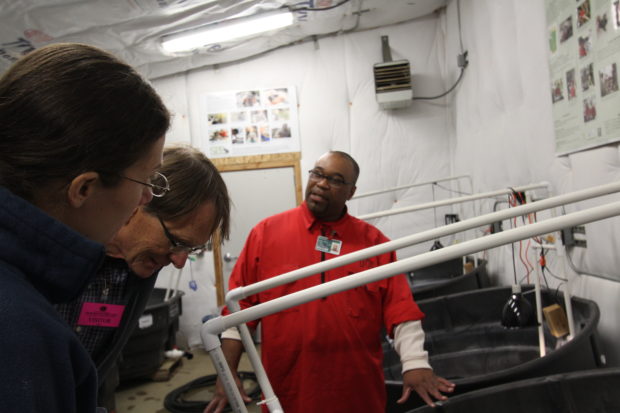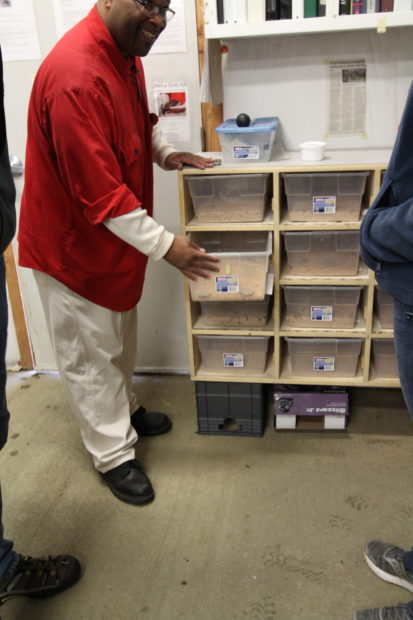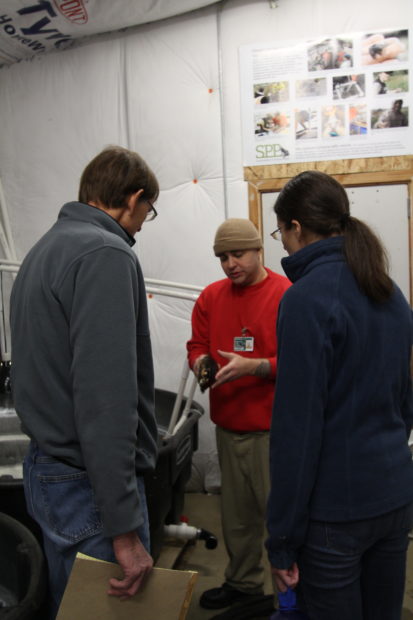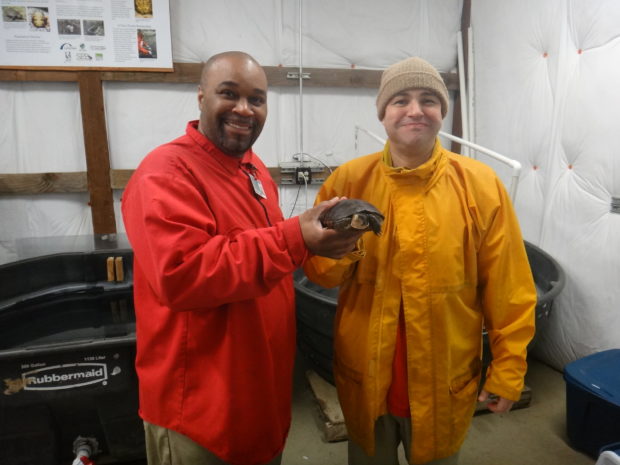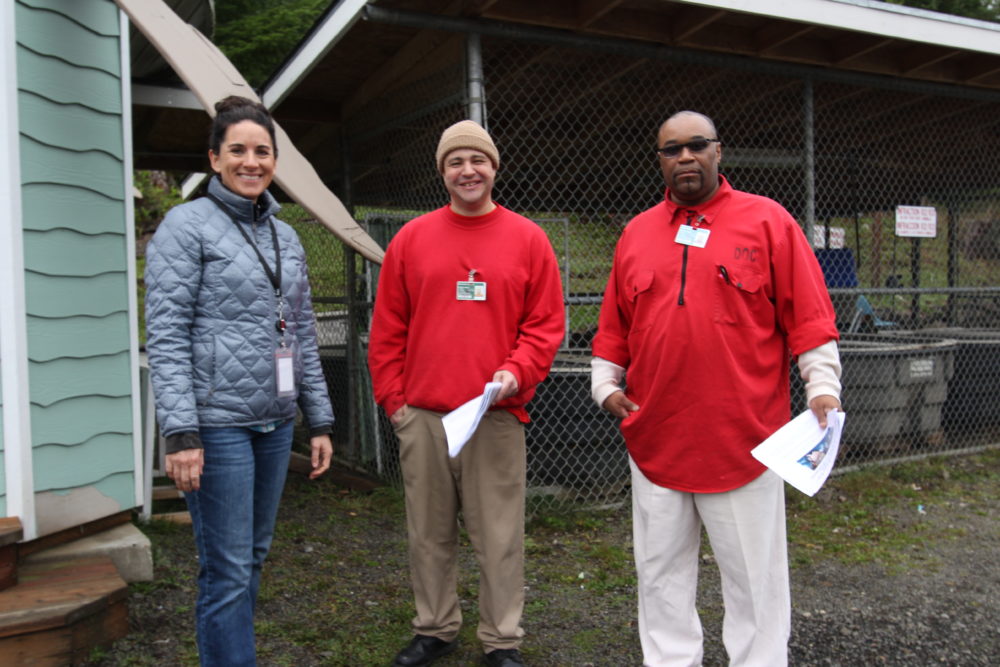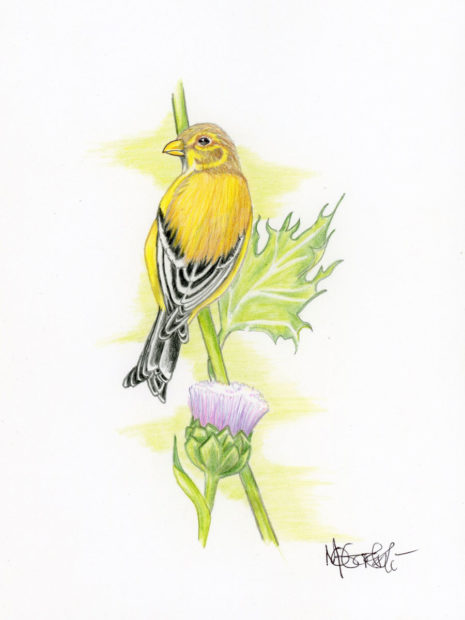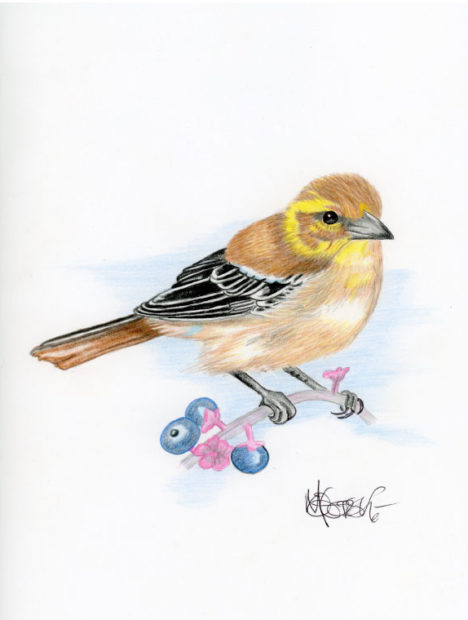by Grady Mitchel and Anthony Powers, Roots of Success Instructors, Bethany Shepler, SPP Green Track Coordinator, and Joslyn Rose Trivett, SPP Education and Outreach Supervisor

Stafford Creek Corrections Center (SCCC)’s 19th and 20th graduating cohorts proudly show their certificates.
Roots of Success (Roots) is an environmental literacy curriculum taught in prisons throughout Washington State. Stafford Creek Corrections Center (SCCC) has championed the program for 5 years; in that time they have graduated more than 300 students in 20 cohorts. In March, we celebrated the two most recent cohorts of graduates.

David Duhaime and Grady Mitchell hold the graduation cake made by the SCCC inmate bakery.
The prison staff and administrators gave speeches highlighting the cooperation needed by everyone for the program to operate successfully. We heard from both past and current program sponsors (Liaisons). SCCC’s first Roots Liaison, Robert Aleksinski made the excellent point that “no matter what your political views are, this is a valuable program”—a fairly rare endorsement for an environmental program. The current Roots Liaison, Kelly Peterson, talked about how her initially negative impressions of Roots had changed since she started supporting the program; when she started working with the inmate instructors and students, she was impressed by their dedication to the program and quality of their work.

The graduating students go through a receiving line to receive congratulations and their certificates.
All five instructors shared wise words, stories, and anecdotes. All five instructors echoed the importance of collaboration among Department of Corrections (DOC) staff and administration, Roots instructors, and Roots students. For example, David Duhaime, instructor and Master Trainer, said, “all of the DOC people have been keeping this program strong.” He talked about the importance of each person involved—whether it be DOC staff, students, or instructors—bringing their own experiences and knowledge to the Roots program. He also highlighted how much students teach the instructors too: “we don’t just learn from these books; these books are real important, but what else happened is you guys came in and shared what you know.”

Instructor and Master Trainer David Duhaime talks to the graduating class about how the instructors learn from the students.
Here are longer excerpts from the speeches made by Roots Instructors Grady Mitchell and Anthony Powers.
Grady Mitchell: Standing in the gap
I recently spoke with a young man about standing up for those who need it. I reminded him of how much he appreciated it when someone else spoke up for him when he was confronted with a situation, and they didn’t just lay low and keep quiet. Some call this type of action as “standing in the gap” for someone. It is our desire to bring out “that voice” that is particular to each of us, in order for others to hear and understand that sustainability in this sense is all-inclusive. Now we see each other with respect, value, and appreciation for individuality.

Grady Mitchell, center, talks about the student whose certificate he’s holding.
What started as impatience for some, ended in tolerance of flaws, and discovery of each other’s value. While we may not ascribe to the mores of prison or commit acts of insensitivity, do we at times perpetuate it by standing aside and staying silent? Never underestimate the phenomenal impact we’ve had on each other and no matter what your philosophy in life, you will have to be open to new ideas when it comes to the environment.
As we learn the impact our actions have on this planet, it becomes imperative that speaking up and out is equal to survival. When I speak with my grandchildren and tell them I love them it’s my call to action to be sure that I try and assure the resources they have will sustain their survival and pray the knowledge I share with them will inspire efforts within them towards their children’s survival.
Unfortunately, “standing in the gap” is not always easy and can sometimes have consequences and the threat of reprisal can deter people—both confined and free—from being righteous or doing justice. Nevertheless, there is a psychological cost involved in following this philosophy because ultimately, lying low and keeping quiet can damage you mentally.
As I talk about standing in the gap, the “gap” creates the opportunity to become useful. That space from where we are to awareness and enlightenment, is where you can find the Roots of Success.
Anthony Powers: The common thread
I have heard a common question being asked. I have even heard this question from some of the people at the Evergreen State College. The question is, “How do we get people to care about climate change?” At first, I thought that I had a reasonable answer, which is that there are a wide variety of people, each with their own personalities, characteristics, political and religious beliefs, so it would probably serve us well to come up with a variety of approaches, targeted at each group, because different things are going to motivate different people.

Instructor Anthony Powers addresses the class about how to motivate people to act environmentally.
Last month I began to think of it in a different way. A way geared more towards the collective, because there is always a common thread, there is something that every human has in common. That is when I realized an error in our current messaging, our saying that we need to save the planet. The reality is that it is more personal than that, and we need to make the message more personal. The reality is that we do not need to save the planet; we need to save ourselves. The planet is going to be just fine. Whether or not it is able to sustain our lives is a whole other thing.
The onus is ours and we are not trying to save the planet, we are trying to save ourselves as a human race, both literally and financially. Because the earth can exist without us, but we cannot exist without earth.

A graduating student receives his certificate.

Master Trainer Cyril Walrond addresses the graduating class about the importance of working together to achieve goals.






